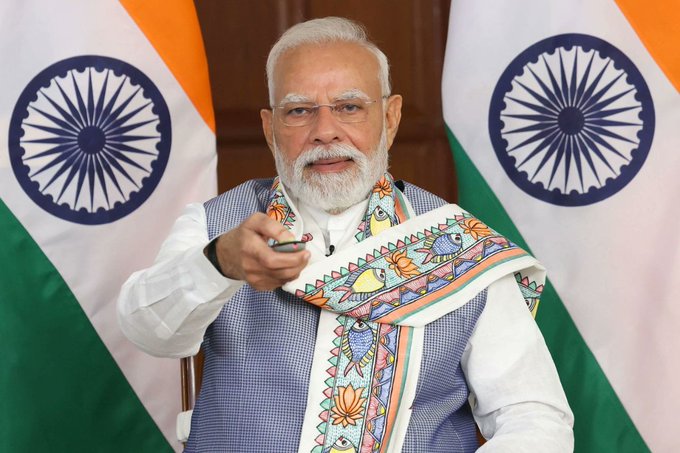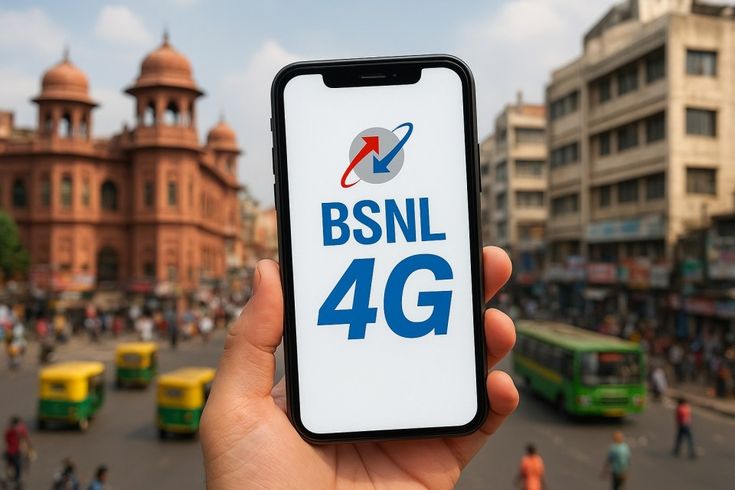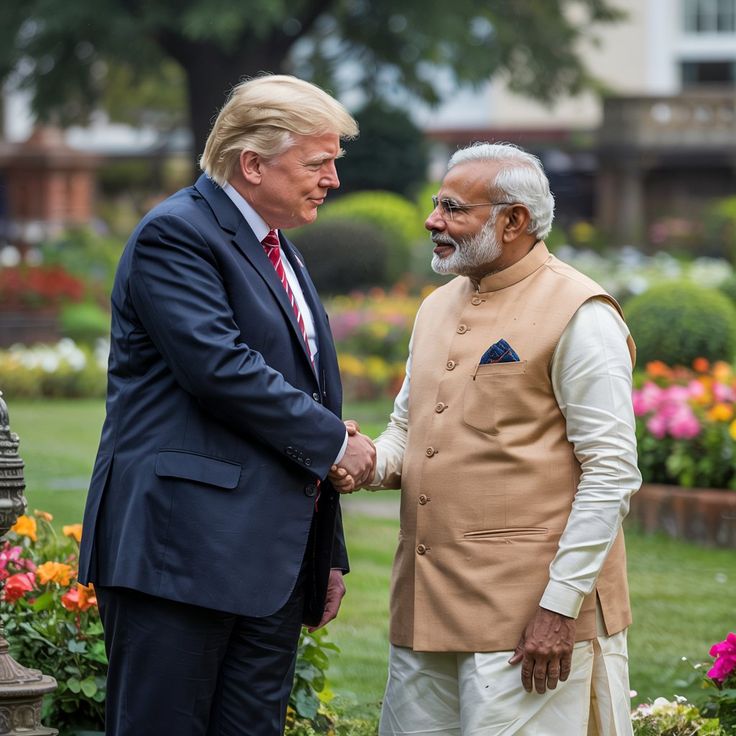Prime Minister Narendra Modi on Friday launched Bharat Sanchar Nigam Limited’s (BSNL) long-awaited indigenous 4G network, marking a significant step in India’s journey toward self-reliance in telecommunications. At a grand event held in Odisha, Modi also commissioned an ambitious rollout of 98,000 new mobile towers across the state, aimed at boosting connectivity in rural and remote regions.
The move, hailed as a “digital leap for Bharat,” represents the government’s commitment to blending technological progress with the vision of Atmanirbhar Bharat (self-reliant India). It comes at a time when India is making rapid strides in digital transformation, from fintech adoption to e-governance and grassroots connectivity.
A Long-Awaited Milestone for BSNL
For decades, BSNL has been the face of public-sector telecom services in India. While private telecom operators surged ahead with 4G and now 5G services, BSNL had struggled to keep pace. With the launch of this indigenous 4G network, built using homegrown technology, BSNL is seeking to stage a powerful comeback.
Prime Minister Modi, in his address, emphasized that the launch was not merely about upgrading network speed, but about “restoring confidence in India’s ability to innovate, design, and implement cutting-edge telecom solutions independently.”
> “India is not just consuming technology anymore; we are creating it. BSNL’s Swadeshi 4G is proof of the talent and determination of our scientists, engineers, and startups. This is the true spirit of Digital Bharat,” he said.
The Odisha Expansion: 98,000 Towers for Rural Reach
The commissioning of 98,000 new mobile towers in Odisha is being touted as one of the largest network expansion drives in recent years. The state, with its diverse geography ranging from dense forests to coastal belts, has long faced connectivity challenges. Large parts of tribal-dominated districts remained digitally excluded, limiting access to education, healthcare, e-commerce, and government services.
By saturating Odisha with new towers, BSNL aims to narrow the digital divide and empower citizens with fast and reliable mobile internet. The project will prioritize rural districts like Kandhamal, Koraput, Kalahandi, and Malkangiri, where connectivity gaps have historically impeded socio-economic growth.
Chief Minister Naveen Patnaik, who joined the launch event, described the initiative as “transformative for Odisha’s rural communities, students, and small entrepreneurs.”
The Indigenous 4G Advantage
One of the most striking aspects of BSNL’s new network is its completely indigenous core. Unlike earlier rollouts that relied heavily on imported equipment, this network has been developed in collaboration with Indian firms and research institutions.
- Technology Backbone: The 4G stack has been created by a consortium of Indian companies, including C-DOT (Centre for Development of Telematics).
- Security Assurance: With global concerns around cybersecurity and supply-chain dependencies, having a domestic solution strengthens India’s digital sovereignty.
- Cost Efficiency: The government believes indigenously developed equipment and software will cut costs and reduce dependence on foreign vendors.
This is not only a technological upgrade but also a strategic move in line with India’s long-term national security and digital independence objectives.
A Step Toward 5G Preparedness
While private operators like Reliance Jio and Bharti Airtel have already begun deploying 5G networks, BSNL’s 4G launch is seen as a stepping stone toward a swadeshi 5G rollout. Officials confirmed that the 4G infrastructure has been designed to be easily upgradable to 5G without requiring complete overhauls.
> “Today’s debut marks the beginning rather than the end. BSNL’s Swadeshi 4G is a bridge to our future 5G. Once this network stabilizes, scaling up to 5G will be faster and smoother,” said Union Telecom Minister Ashwini Vaishnaw.
Digital Bharat and the People-Centric Vision
The Modi government has consistently pushed for technology-driven empowerment under its Digital India mission. Over the years, initiatives such as Aadhaar-based services, UPI digital payments, and rural internet programs have transformed how citizens interact with governance and markets.
BSNL’s 4G expansion is expected to complement this vision by:
1. Boosting Rural Education – Students in remote villages will gain access to online classes, digital libraries, and career counseling platforms.
2. Improving Healthcare – Telemedicine services can reach remote communities, reducing the burden on district hospitals.
3. Strengthening Governance – Village-level digital kiosks and e-Seva centers will operate more efficiently with better bandwidth.
4. Empowering Small Businesses – From farmers checking market prices to artisans selling products online, rural entrepreneurship will get a boost.
Employment and Economic Spin-Offs
The network expansion is expected to create thousands of direct and indirect jobs. From tower installation and maintenance to IT support, the project will engage a wide ecosystem of vendors, engineers, and technicians.
The Odisha government has projected that improved connectivity will also attract investments in IT parks, call centers, and small-scale industries, creating a multiplier effect on the local economy
Challenges Ahead
While the launch has been celebrated, experts caution that BSNL must overcome multiple challenges to regain its lost ground:
- Competition from Private Players: Jio and Airtel already dominate with robust 4G and 5G services.
- Quality of Service: BSNL will have to ensure reliability, speed, and customer support to retain users.
- Financial Sustainability: The public-sector giant has faced financial stress for years. Success of the new rollout will depend on efficient execution and customer adoption.
- Technology Upgradation Pace: The world is rapidly moving toward 5G and even 6G research. BSNL will need to catch up quickly.
Voices from the Ground
The announcement has generated enthusiasm among citizens and industry stakeholders alike.
- A tribal student from Kalahandi: “We often lose internet during online classes. If this 4G network really works, it will change our studies.”
- A small shop owner in Balasore: “Mobile payments are rising, but slow internet is a big problem. Faster BSNL service will help my business.”
- Telecom Analyst Ramesh Menon: “BSNL’s indigenous push is symbolic and strategic. However, execution speed and service quality will determine if it can be a game-changer.”
A Symbol of Atmanirbhar Bharat
The Swadeshi 4G launch aligns with India’s broader goal of becoming a global hub for digital innovation. From semiconductor manufacturing to indigenous satellite launches, the government has been pushing self-reliance in technology.
By deploying an indigenous telecom stack at scale, India joins a small club of nations capable of building and maintaining their own mobile networks without external dependence.
Prime Minister Modi concluded his speech with a forward-looking note:
> “This is not just a launch. This is India saying to the world: we are ready, we are capable, and we are unstoppable in our digital journey.”
Looking Ahead
With the commissioning of nearly one lakh mobile towers and the rollout of Swadeshi 4G, BSNL is positioning itself for a comeback story. The coming months will be crucial in determining whether the network delivers on its promises and whether citizens embrace it in large numbers.
For Odisha, this initiative could mark the beginning of a new digital era, bridging divides and opening opportunities for millions. For India, it is another bold stride toward self-reliance and leadership in the global digital economy.
As the dust settles after the grand launch, one thing is clear: Digital Bharat is not a distant dream anymore — it is unfolding, one tower at a time.
Related News: Read More




